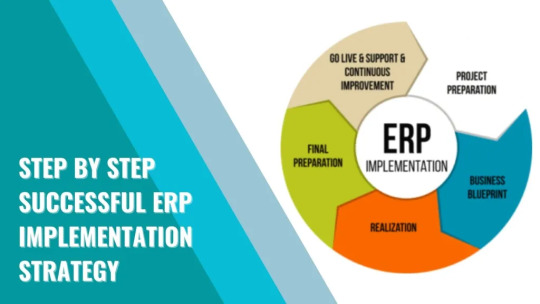#wrp
Text
Someday I might return fully but I need time away for now. If interested in writing don't hesitate to message me, but I'm highly selective. Give me a year and I may return to rp fully.
For now, expect slow replies. I usually reply at most once a day depending on my mood.

Continue for muse info - All muses are 18+ - STARTER CALL
Rio - Inugami (Dog demon) - Autistic, chronically Ill, PTSD and anxious. - Freelance fashion designer
Anxious autistic girl. Dealt with a lot of abuse in her youth and now struggles with the trauma. She relies heavily on her emotional support dog Akachan a lot. She doesn't talk to her parents anymore. Her parents disowned her for being disabled and her mother tried to kill her when she was young.
Cho Hye-Bin - Nickname Hayden - Tengu (Crow demon) - Autistic, PTSD, addictive personality and anger issues - Freelance writer
Autistic and a bit of a loner. Dealt with a lot of trauma from past relationships. She is a protective person who tends to avoid relationships but likes to fool around. She has a sister but isn't close with her. She also doesn't talk to her parents anymore. Her mother always hated her for not being straight.
Hikari Ogawa - illim demon (demon of pleasure) - ADHD and addictive personality - Nail artist
Mitsuki Iwata - Half alien and half human - Autistic and Asthmatic - part time model and part-time shop worker
Chaiyo Chaikham - Bakeneko (Cat demon) - Autistic and Anemic (prone to fainting) - Aspiring idol and part-time shop worker
Arun (Ah-roon) Siriwong - Nickname Sky - Vampire (friendly kind) - OCD, sensitive to sun and overprotective - Gang leader and model
0 notes
Photo

#RallyRACC 🇪🇦🌎✈️ 🧡 @rallyracc @officialwrc @wracingproject @hmsgofficial El Rally de los sueños catalanes #i20NRally1 #HMSGOfficial #WRP #ARGWRT 🇦🇷🌏🧡 (en Salou, Tarragona) https://www.instagram.com/p/Clg36ypuAa2/?igshid=NGJjMDIxMWI=
0 notes
Text
Price analysis 11/21: SPX, DXY, BTC, ETH, BNB, XRP, ADA, DOGE, MATIC, DOT

0 notes
Text
Lou trying to process her breaking things off with Talon: Maybe I am a lesbian
Chip and Aly both just existing: Hi Lou!
Lou: Fuckin-
1 note
·
View note
Text

Lqg catches SJ at WRP!!

#his brothel jiejies dress him up for funsies but lqg catches him there like that one day#scumbag self saving system#liu qingge#liujiu#scumbag villain#shen jiu#svsss#shen qingqiu#ayuarchive#wrp!jiu
1K notes
·
View notes
Text
Step by Step Successful ERP implementation strategy
ERP implementation strategy for ERP systems should include a focus on the success of the company’s current ERP system and where it is currently. The article highlights the importance of identifying your current state, defining how much time is needed, and organizing your business in such a way that you’re able to use IT more effectively.

Analyzing Your ERP Goals
When reviewing your organization’s goals for an ERP implementation, it is important to consider not only the business needs of your organization, but also the IT needs. Here are some key elements to consider when developing an ERP implementation strategy:
Necessity: Is there a need for an ERP system in your organization? Often times, businesses can successfully operate without an ERP system, but if your company relies heavily on information technology and is looking to improve its efficiency and accuracy, then an ERP system may be a necessary tool.
Scope: What functions will the ERP system provide? An ERP system will typically include features such as accounting, inventory management, customer relations management (CRM), and distribution management. It is important to decide which functions are most important to your business before investing in the software.
Timing: How soon do you need the system implemented? The sooner you can get started with the project, the less time you will spend on implementing the system and more time you will have to focus on running your business. However, rushing into an ERP implementation can lead to problems down the road. Do your research and ensure that the
Defining Your ERP Strategy
If you are contemplating an ERP implementation, there are a few things you should consider before starting. First and foremost, what are your business goals? Do you want to streamline operations or consolidate data? Once you have a sense of what you want out of the ERP system, it is important to develop a strategy for implementing it. Here are four things to consider when putting together your ERP strategy:
1. Define the Scope of Your Project
ERP implementations can be complex and expensive, so it is important to understand exactly what you need and how much it will cost to get started. Do you need all the features of an ERP system or just a portion? Will you use the system internally or contract out its services? Once you have a better idea of the scope of your project, it is easier to identify which vendors have the capabilities required and assess their pricing.
Map Your Business Processes to ERP Tables
ERP systems store data in tables that correspond to business processes. Before jumping into development, it is essential to map your current process flows to these tables. This step allows you to determine which data must be transferred over from legacy systems and ensures that you have the right data in the right place.
Identify Data That Must be Transferred and Assess the Business
Value of In-house Development If no direct data transfer is required, then you can consider using an outsourcer to handle this portion of your project or even dedicate a team within your organization. However in many cases, out-sourcing data transfer may not be feasible or cost effective.
Building A Project Management Team
A successful ERP implementation strategy starts with assembling a project management team. This team should include individuals with expertise in ERP technology and project management, as well as people who are familiar with the company’s business operations. The team should also be able to work together smoothly and efficiently.
To assemble a successful project management team, consider hiring individuals with specific ERP skills and experience. For example, you may want to hire an accountant to help manage financial data in the system, or a marketing specialist to help manage customer data. You also may want to consider hiring people with experience in your company’s business operations, in case there are any areas of the project that require special knowledge.
When assembling the team, it is important to create a clear delineation of responsibilities. Each member of the team should know exactly what he or she is responsible for. This will help ensure that tasks are completed on time and within budget.
Finally, it is important to establish communication guidelines for the team. This includes establishing a schedule for meeting and discussing project updates, as well as setting ground rules for collaboration (such as no private emails during meetings). These guidelines will help ensure that everyone on the team is aware of what is happening and that
Assigning Tasks and Responsibility To The Project Management Team Members
As the owner of a business, it is important to keep track of all the tasks that need to be completed in order for the company to be successful. One way to do this is by using an ERP system. An ERP system is a computerized system that can help businesses with their accounting, inventory, and sales processes.
When implementing an ERP system, it is important to assign tasks and responsibilities to the project management team members. The project management team members should be able to identify the tasks that need to be completed in order for the ERP system to work properly and should be able to track the progress of these tasks. In addition, the project management team members should be able to communicate with other members of the company regarding these tasks.
Involving The Stakeholders In planning the implementation
In order to ensure success with an ERP implementation, it is important to involve all stakeholders in the process. This includes not only the business users and IT staff, but also the stakeholders who will be impacted by the changes, such as sales and marketing.
When planning an ERP implementation, it is important to take into account the needs of all stakeholders. This includes not only business users and IT staff, but also the stakeholders who will be impacted by the changes, such as sales and marketing. Involving these groups early in the process can help ensure a successful overall project.
Sales representatives can play a key role in helping to determine which ERP system is best for their organization. They can provide input on how the system will affect sales processes and data storage requirements. Marketing professionals can also provide valuable feedback on how the new system will impact customer relations. By involving all interested parties early in the development process, everyone can avoid potential conflicts and make sure that the implementation is successful.
Defining your implementation strategy and timeline throughout the project
There are many aspects to a successful ERP implementation, and it is important to define your strategy early on in order to ensure a smooth transition. By following a specific timeline and taking into account various factors such as budget and the company’s size, you can make sure that your ERP project meets all of your objectives.
Here are some key points to keep in mind when developing your ERP implementation strategy:
Determine the scope of the project – Once you have determined the areas you want to upgrade or replace, decide which elements will be included in the project. This will help determine the timeline and budget needed for the project.
Assess your business needs – Once you have determined the scope of the project, it is important to assess what changes are necessary in order for your business to operate more efficiently. This includes assessing your current systems, processes, data structures and reports.
Plan for integration – One of the biggest challenges with any ERP implementation is integrating all of the new software into an existing system. Planning for this step is essential in ensuring a smooth transition for your employees and customers.
Establish trust and communication – How do you expect your employees to use the new software? Are they willing to spend time using it? Establishing a positive relationship with your employees is essential in creating a good experience while they transfer their data and training into the new software.
Provide training – The most important part of any ERP implementation is ensuring your employees are properly trained on the new system. Training will help them use the new software effectively and efficiently.
Develop business continuity plans – As we discussed earlier, integrating an entire system usually takes months, so planning for a smooth transition is crucial. Including contingency plans for this process will ensure that you are prepared for any problems that may arise during implementation.
Evaluating Success with success criteria
There are a few key components to a successful ERP implementation strategy. By understanding and evaluating these elements, you can ensure that your ERP project is on the right track.
Budget: Ensure that your budget is adequate for the scope of the project and the anticipated benefits.
Timing: Plan the implementation timeline carefully, taking into account the needs of your business and the availability of resources.
Implementation Team: Select a qualified team with the necessary skills and experience to complete the project successfully.
Testing and Training: Make sure that all users are trained on how to use the new system and test it regularly to ensure stability and functionality.
Integration: Coordinate with other systems in your business to ensure smooth integration and optimum functionality.
Conclusion
In this article, we have outlined the key elements of a successful ERP implementation strategy. By following these steps, you will be able to ensure that your ERP system is set up correctly and integrated seamlessly into your business operations. Remember to always consult with your IT department in order to make sure that your ERP system is compatible with the rest of your network and infrastructure. If implemented correctly, an ERP system can provide you with significant improvements in efficiency and productivity.
0 notes
Text

#qijiu#original shen qingqiu#shen jiu#yue qingyuan#fanart#merman#this happens aftfer they sort through that big misunderstanding they have#had*#:33#good for them#also would it not be cool if sqq runs this#business thing. like how women used to sell poison to wives to get rid of their husbands?#that sort of thing#but instead he lures the men into the waters#for a midnight swim :) definitely just a swim and not a whole lot of asphyxiation or smth#yqy makes sure sqq and the women dont get caught#women also includes the wrp ladies#svsss#mxtx
646 notes
·
View notes